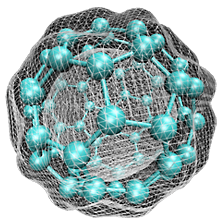
|
Science, Technology and the Public
Science Daily, in Nanoparticles Against Aging, examines the development of an intelligent nanodevice consisting of mesoporous nanoparticles with a galactooligosaccharide surface that selectively opens in degenerative phase or senescent cells [1]. Ramón Máñez effectively communicated this scientific breakthrough to the public, reporting that the discovery demonstrates how selected chemicals can be released in some cells and not in others. The use of an intelligent nanodevice to deliver chemicals enables new discoveries and reveals some of the unique capabilities of this technology including treatment delivery systems. Scientists continue to make great strides in applied nanotechnology (e.g., carbon nanotubes [2]) research with breakthroughs in medical delivery, materials technology, manufacturing developments and processing. Scientists may easily grasp the positive attributes of this nanodevice discovery; however, the public, in general, might not be able to decrypt the scientific jargon or the full potential of its use, often leaving them confounded and/or apprehensive about the ramifications of such a discovery. Public references to nanotechnology elicit a mixed response. For instance, some environmentalist groups condemn nanotechnology as “nanocontamination.” In 2010, the National Science Foundation conducted a public assessment of the benefits and harms of nanotechnology study and found that only 37% of adults polled believed that the benefits of nanotechnology will outweigh the harmful results, 43% answered that they simply did not know and 11% responded that the harmful results outweigh the benefits. Communication is Key Improving science and technology education and communicationbetween the public and the scientificcommunity is critical in arapidly changing global environment. Effective communication may create new research opportunities, facilitate broader education initiatives, and foster a more encouraging view of new discoveries. By doing so, one might contextualize nanotechnology research in an easy to understand way that actually affects the connotation. References
Image Acknowledgement: The image is a Bucky ball with isosurface of ground state electron density, calculated with DFT and the CPMD code. It was created by Isaac Tamblyn (http://myweb.dal.ca/itamblyn/site/Home.html). It is used under the GNU Free Documentation License. |

